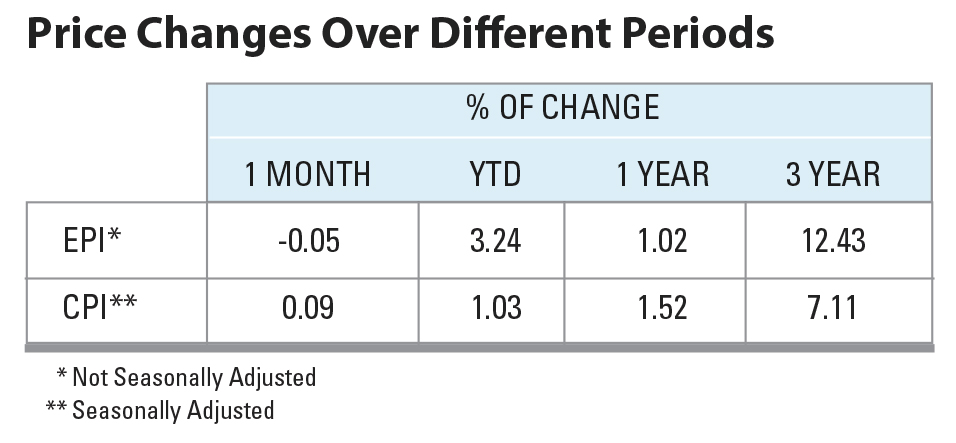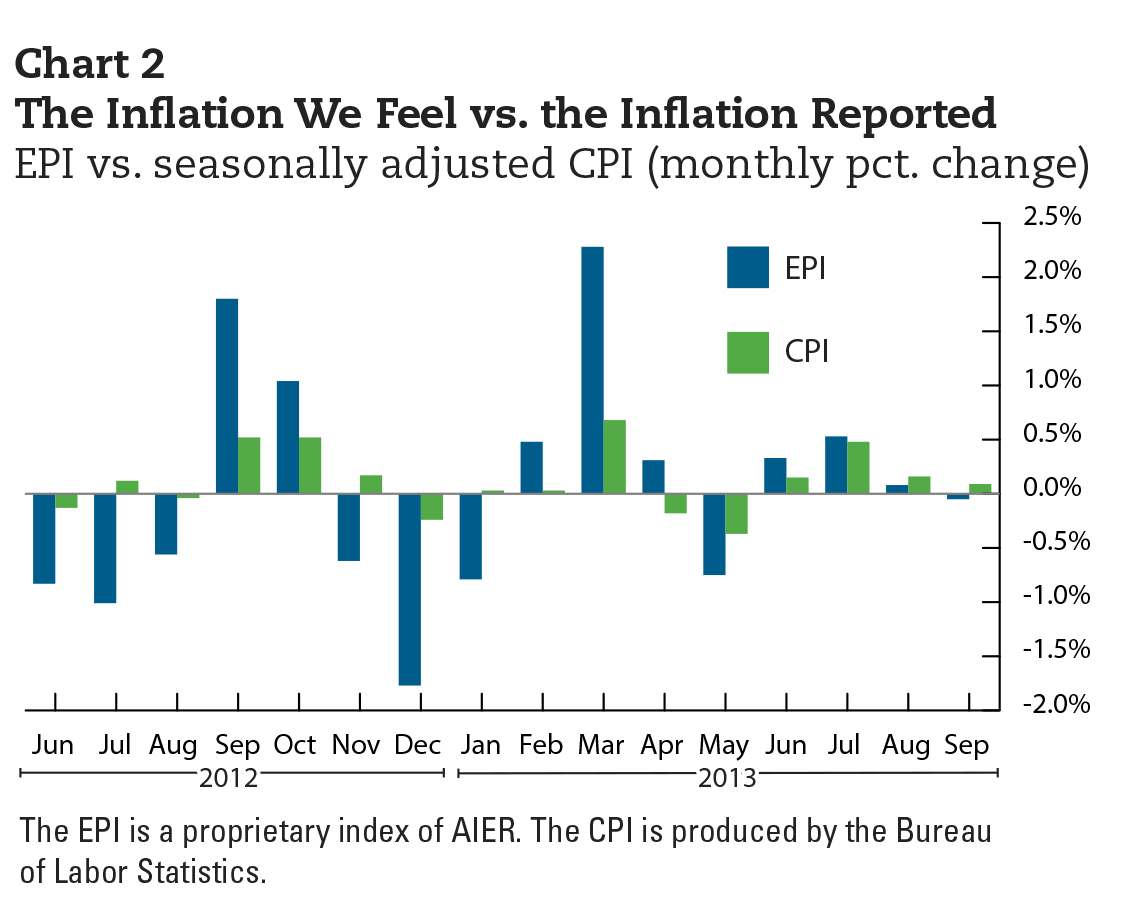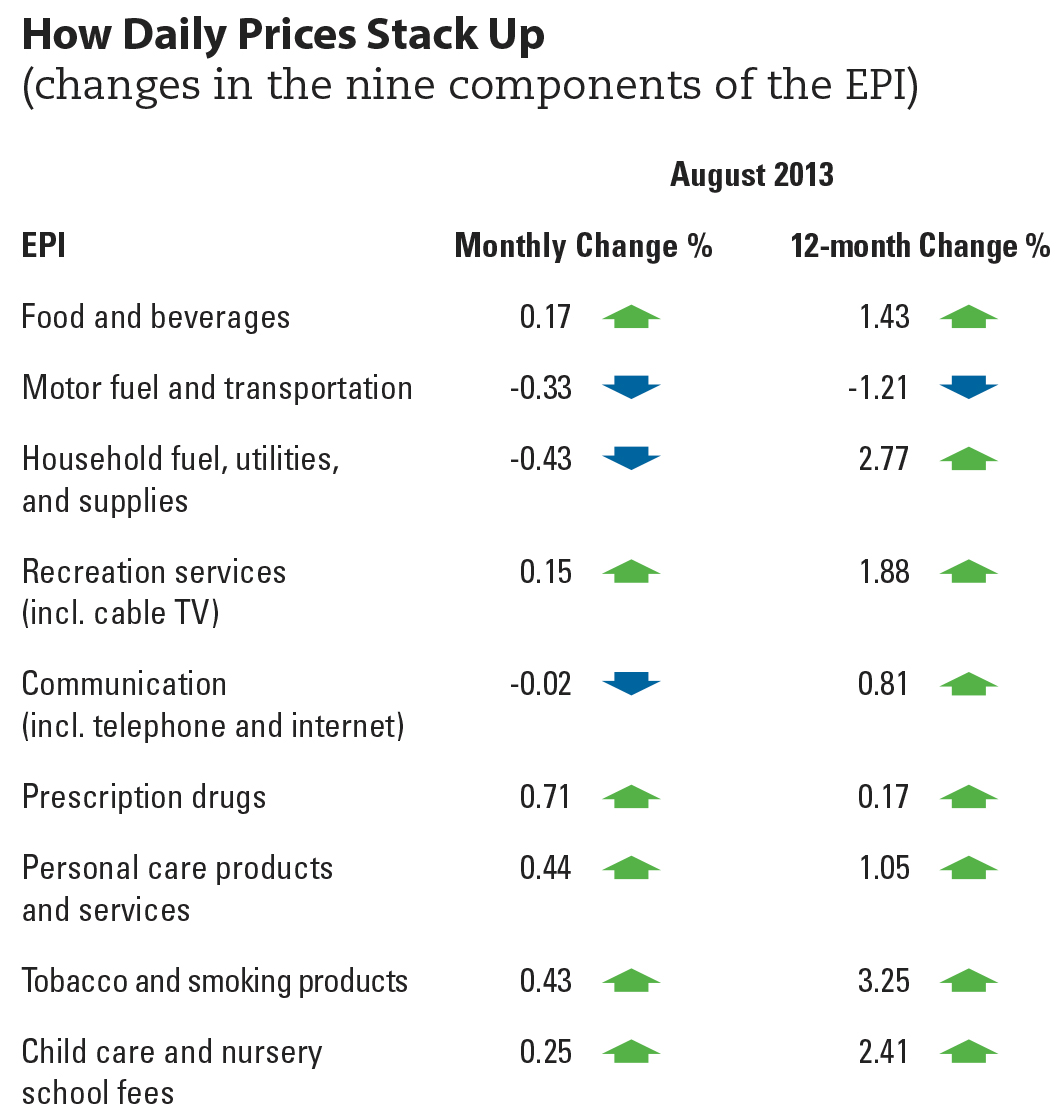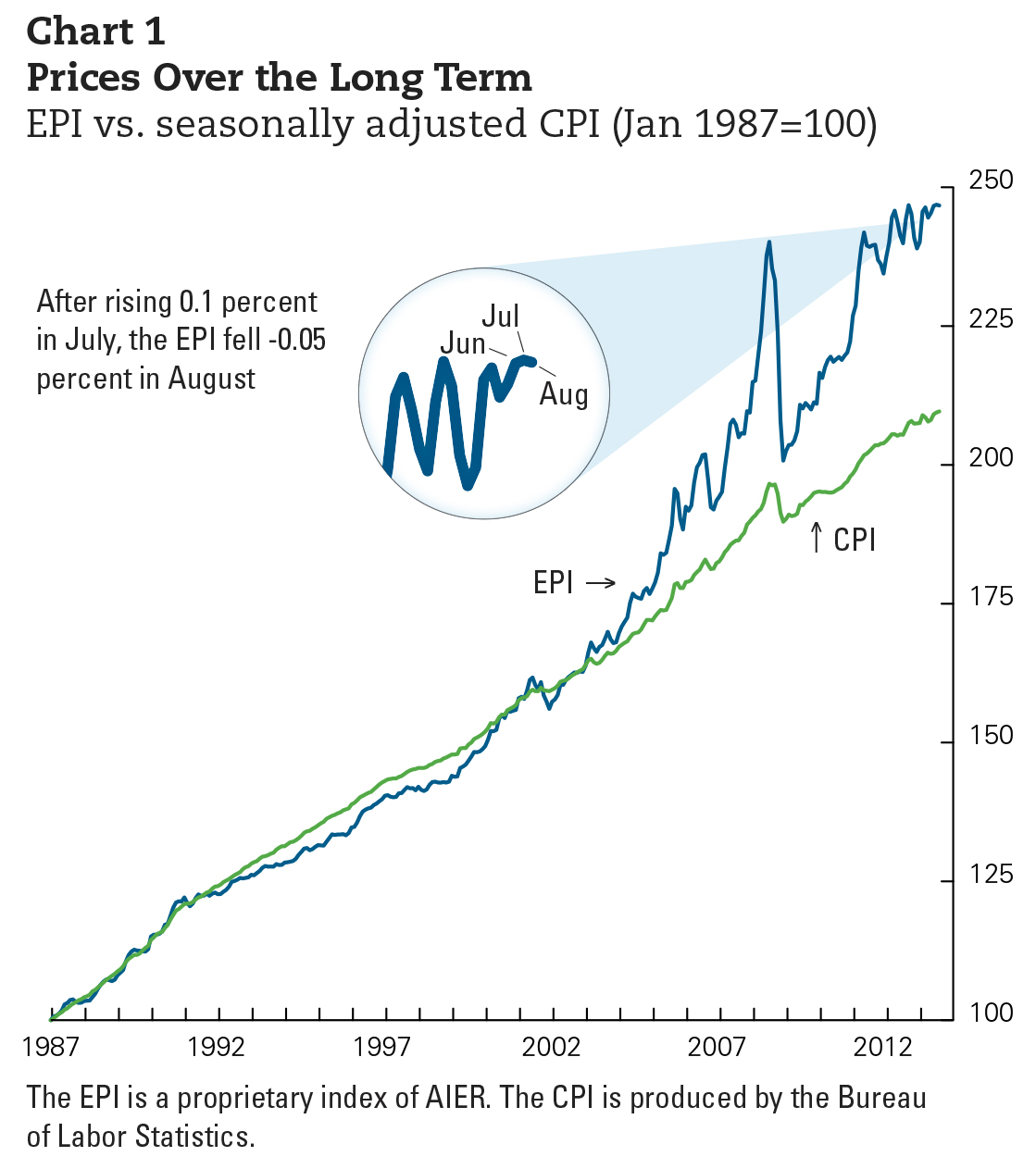Gas Drives EPI Downward
As Chart 2 shows, the CPI increased 0.1 percent, but on a seasonally adjusted basis. (The EPI is not seasonally adjusted.) See Chart 1 for a long-term comparison of the EPI and CPI.
Motor fuel and transportation is a major contributor to the August decline, falling 0.3 percent. In this category, motor fuel prices decreased 0.5 percent, offsetting the increase in motor vehicle insurance and public transportation.
Despite concerns over effect of the conflict in Syria on Middle East oil supply, the outlook for motor fuel indicates that the average motor fuel price will be lower than it was last year. The futures price for Brent crude settled at $108.19 per barrel on September 17, the lowest since the end of July. The U.S. Energy Information Administration (EIA) has projected that the average Brent crude oil price this year will still be lower than it was last year. EIA expects this decreasing trend to continue through 2014. At press time, the average regular gasoline price at the pump is $3.55 per gallon, $0.04 lower than the average year-to-date price.
Household fuel, utilities, and supplies, which trended down 0.4 percent, was another major factor in the August decline. In this category, household energy was the driver. Utility (pipe) gas service prices declined 2 percent, and electricity bills decreased 0.5 percent, which offset the increases in fuel oil, propane, and kerosene.
While the monthly change in electricity prices is its second decrease this year, this will not overturn the upward trend. Year-over-year, changes in electricity prices have been gradually accelerating from a 1 percent increase in January to a 3 percent increase in August.
Utility (pipe) gas prices have been increasing on a year-over-year basis since last July. The relatively low price of natural gas after 2006 allowed manufacturers to switch to natural gas for their production and heating fuel needs. With the current revival of manufacturing, more demand for natural gas will keep driving up its price.
While the energy expenditures that make up the biggest portion of consumers’ everyday expenses dropped last month, expenditures that constitute a small portion of everyday expenses went up.
Prescription drug prices had the biggest increase last month, at 0.7 percent. But on a year-to-year basis, the increase has been slowing and the price has stayed relatively stable for four months.
Prices for tobacco and smoking products increased 0.4 percent. Year-over-year increases suggest that their prices will continue in an upward trend.
The prices of personal care products and services also went up 0.4 percent. The main driver is prices forpersonal care services. Prices for personal care productshave been on a downward trend on a year-over-year basis.
About the EPI
AIER’s Everyday Price Index (EPI) measures the changing prices of frequently purchased items like food and utilities. We do this by selecting the prices of goods and services from the thousands collected monthly by the Bureau of Labor Statistics in computing its Consumer Price Index. The EPI basket contains only prices of goods and services that Americans typically buy at least once a month, excluding contractually fixed purchases such as mortgages. Our staff economists weight each EPI category in proportion to its share of Americans’ average monthly expenditures. In order to better reflect the out-of-pocket prices that consumers experience on a daily basis, the EPI does not seasonally adjust prices.









